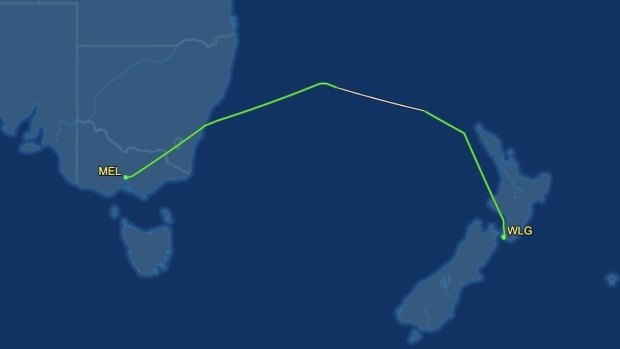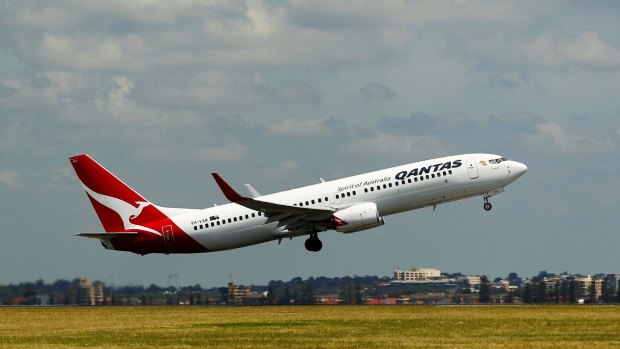This was published 1 year ago
Why this Qantas Boeing 737 Wellington - Melbourne flight made a huge 870km detour
By Brook Sabin

The Qantas flight took a route that required more than an hour of extra flying.Credit: Flightaware
Passengers on a flight from Wellington to Melbourne found themselves on an 870-kilometre detour up towards Norfolk Island, meaning their flight took almost five hours.
The massive semi-circle for those aboard QF172 on June 21 was due to a mechanical fault that developed before the plane took off. A Qantas spokesperson said it was an issue with the "engine driven pump filler" on the 737 aircraft.
The plane was checked by engineers and cleared to depart. However, Qantas explained this particular fault meant it needed to fly closer to diversion airports, which are used in the event of an emergency.

A Qantas Boeing 737-800 aircraft.Credit: Bloomberg
In this case, the restriction meant the plane flew over Mt Taranaki, up the west coast of Auckland and Northland, then towards Norfolk Island (which has a runway long enough to take 737s). It then headed out towards the east coast of Australia, where it was closer to Port Macquarie Airport as a suitable diversion point.
It then flew over Canberra and down to Melbourne, adding around 870km to the usual flight, according to Flightaware.com.
The extended flight took 4 hours 50 minutes, as opposed to the usual flight time of around 3 hours 40 minutes.
A Qantas spokesperson said there was no safety issue with the aircraft and that it was a "requirement" to fly the extended route until it got back to Melbourne, adding extended routes like this were "very rare."
The aircraft is already back in full service.
Why did the plane need to fly closer to diversion airports?
Aviation is one of the most safety-regulated industries in the world. In the earlier days of long-haul travel, many four-engine planes flew longer routes over oceans - meaning extra redundancy if an engine failed compared to a twin-engine plane.
However, times have changed in aviation. In recent decades, airlines have increasingly used twin-engine planes, like the 777, to fly long-haul routes over oceans. Regulators came up with rules on how far from diversion airports these planes could fly, because they have less redundancy than four engine planes.
The rules are known as ETOPS - or Extended-range Twin-engine Operational Performance Standards.
As engine reliability has improved, ETOPS limits have been extended. Twin engine planes can now fly up to five and a half hours away from the nearest airport. This means airlines like Air New Zealand can operate even quicker routes across huge areas of the Pacific Ocean when flying from Auckland to Los Angeles.
Across the Tasman, the short hop is easily within ETOPS rules, meaning twin-engine planes can fly direct. However, in this case with the Qantas plane, the ETOPS allowance was reduced because of the pre-flight fault, meaning the aircraft had to take a longer route closer to diversion airports.
See also: Australia's newest airline in groundbreaking first on crew uniforms
See also: '20 seconds': Qantas changes airport check-in process
Sign up for the Traveller newsletter
The latest travel news, tips and inspiration delivered to your inbox. Sign up now.